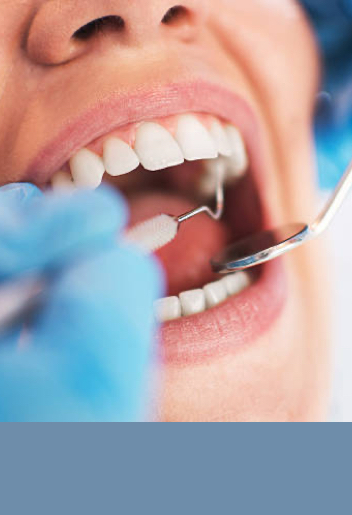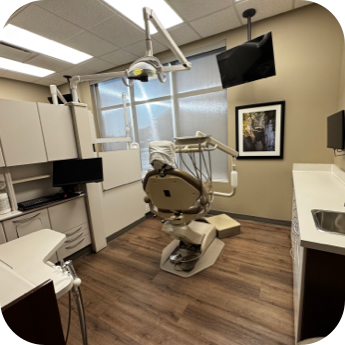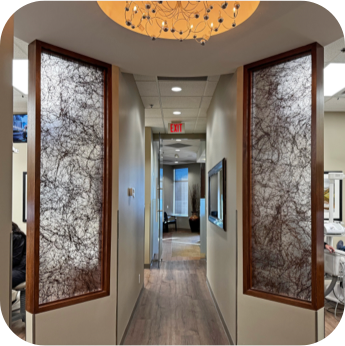Transform Your Smile with Our Restorative Services
Our team at Country Hills Dental knows how important it is for our patients to have a healthy, functional smile. Whether you’re dealing with a damaged tooth, cavities, or missing teeth, our restorative dental care services are here to help you restore your smile’s form and function.
From fillings and crowns to implants and root canals, our experienced team is ready to guide you through every step of the process. Don’t let dental problems affect your smile—take action today to restore your teeth and enjoy a better quality of life.
Contact us to book your appointment today to explore your restorative options and get back to a healthier smile.
Book Appointment
What to Expect from Restorative Procedures
We begin with a thorough consultation to discuss your treatment options. Most procedures, like fillings and crowns, can be completed in 1 or 2 visits, while more complex procedures, such as root canals and dental implants, may take longer.
You may need to avoid certain foods or take prescribed medications to help your healing process. Maintaining excellent oral hygiene will also help preserve the longevity of your restorations.
Crowns & Bridges Restoring Function & Appearance
Crowns and bridges are vital solutions for restoring both the function and appearance of your teeth. Both treatments use durable materials so your restored teeth blend seamlessly with your natural smile.
Crowns
A crown is used to restore damaged or weakened teeth, providing both protection and functionality. Whether it’s a chipped, broken, discoloured, or root-canaled tooth, a crown covers and strengthens the tooth, allowing it to function like a natural tooth again.
Crowns can also improve the appearance of a tooth, enhancing its colour and shape. Here’s what to expect:
- To prepare for a crown, the damaged tooth will be reshaped to the appropriate size. Once ready, the custom-made crown is cemented in place, restoring the look and feel of a natural tooth.
Bridges
A bridge is an ideal solution when you’re missing one or more teeth in a row. It uses artificial teeth anchored to the adjacent natural teeth, filling the gap in your smile and preventing other teeth from shifting into the empty space.
Bridges help restore your smile and improve chewing function, making it easier to eat and speak comfortably.
Here’s what to expect:
- To install a bridge, your dentist will reshape the teeth on either side of the gap to accommodate crowns (or implants). Then, an impression of your teeth will be sent to the lab, where your customized bridge will be created.
- Once the bridge is ready, the crowns are placed over the prepared teeth, securing the bridge in position.
Root Canals
A root canal is necessary when a tooth’s nerve becomes infected. This procedure helps save the tooth and prevent extraction by removing the infected pulp and sealing the tooth. Symptoms such as severe tooth discomfort, swelling, or sensitivity to hot or cold may indicate that a root canal is required.
With modern techniques, a root canal can effectively resolve the infection and restore your tooth’s function.
Fillings
If you notice tooth sensitivity or visible holes in your teeth, a filling may be necessary to restore the tooth. A filling helps eliminate decay, preventing it from spreading and causing further damage.
This treatment is typically used for cavities that haven’t affected the tooth’s nerve. Your dentist will work with you to choose the best material option, including composite and silver amalgam, to match your tooth’s needs and appearance.
Dental Implants to Complete Your Smile
Dental implants are a permanent solution for replacing missing teeth. They involve placing a titanium post into the jawbone to serve as a replacement root for a missing tooth. Once the implant is integrated with the bone, a custom crown is placed on top, restoring both function and appearance.
Implants look, feel, and function like natural teeth, allowing you to eat, speak, and smile with more comfort.
Other Restorative Procedures
For minor to moderate dental damage, inlays, onlays, and bonding can provide effective solutions. Inlays and onlays are custom-made restorations designed to fit cavities that are too large for regular fillings but not severe enough to require crowns.
They restore your tooth’s structure while maintaining a natural look.
Bonding is a fast and cost-effective option for fixing minor imperfections like chips, cracks, or discolouration. A tooth-coloured resin is applied, shaped, and hardened to seamlessly blend with your natural teeth.
Both treatments are ideal for enhancing your smile with minimal disruption to your daily routine.
Veneers: A Quick Fix for a Beautiful Smile
Veneers are thin, custom-made shells that cover the front of your teeth and are designed to improve their appearance. They’re a great option for fixing stains, chips, cracks, misalignment, or gaps between teeth.
Veneers can fix:
- Discoloured or stained teeth
- Chipped or cracked teeth
- Slightly misaligned teeth
- Gaps between teeth
Veneers are a durable, stain-resistant solution for enhancing your smile with minimal discomfort.
Get the Restorative Care You Deserve
Whether you need a filling, crown, veneers, or another restorative treatment, our team at Country Hills Dental is here to help you achieve a healthy, natural-looking smile.
Don’t let dental concerns hold you back—schedule a consultation today and let us guide you toward the best solution for your oral health. Contact us to book your appointment today and take the first step toward a smile that feels as good as it looks!
Book AppointmentCheck Out What Our
Patients Have to Say
Come Visit Us
Our Address
#707 500 Country Hills Blvd NE
Calgary, AB T3K 4Y7
Contact Information
- Phone: (403) 226-1809
- Email: reception@countryhillsdental.com











